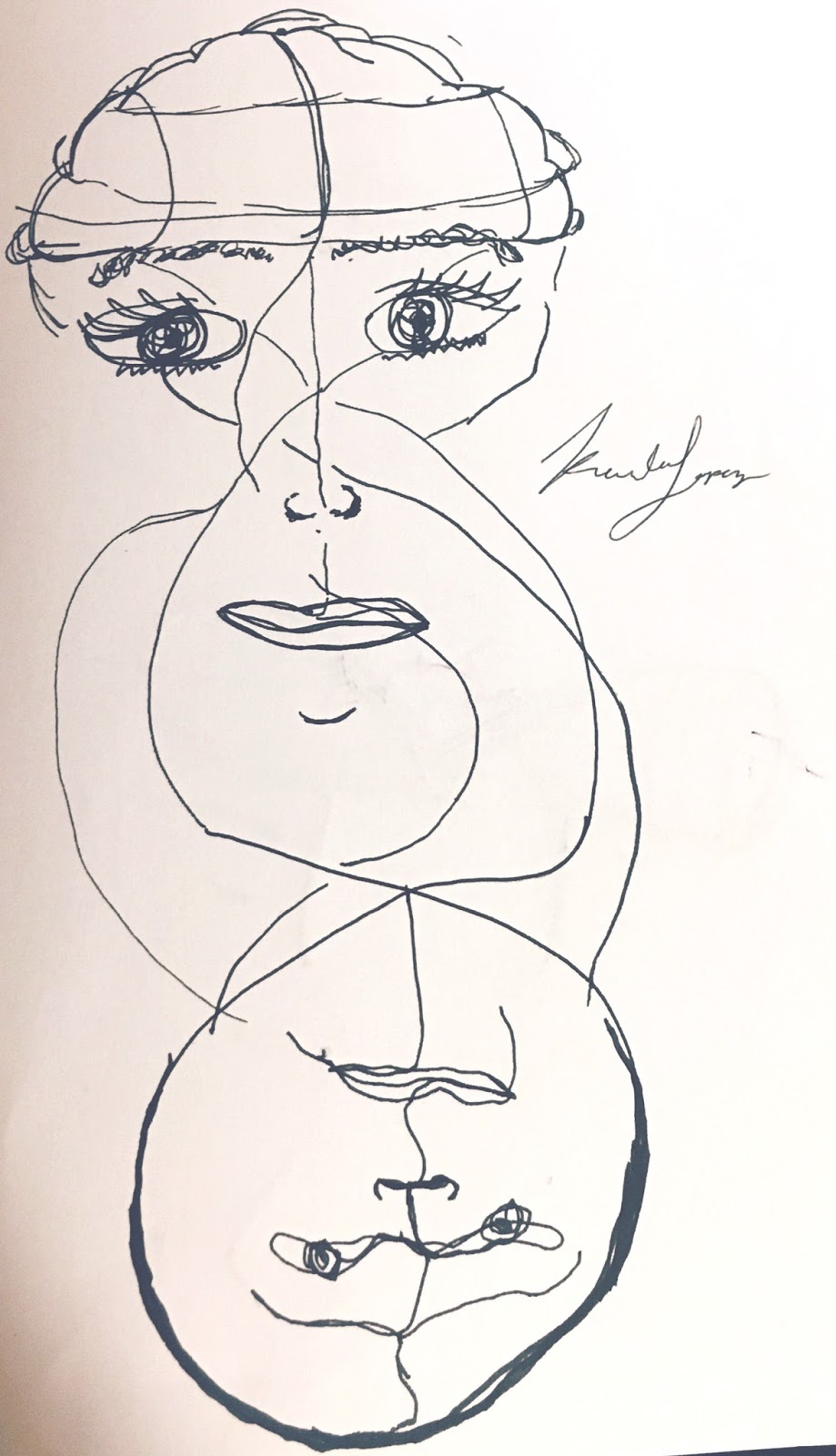MAY 03, 2019: Reconfiguring Intersectionality
Reconfiguring Intersectionality
Class essay about Black Feminism and Intersectionality
By yours truly, Karla.
The notable capitalistic space (working within a patriarchal society) in feminist efforts attracts the questioning of identity politics and the significance of it in gender and anti-racist efforts. The division of identity leads to the influence of social institutions and the problematic ways of dismissing individuals in certain groups to participate in a feminist coalition. Jennifer Nash’s proposal of the reinvention of intersectional consciousness organizes works from Audre Lorde, Andrea Smith, Patricia Hill Collins, and Anna Julia Cooper to question the social structure which influences the Black feminist thought in their work. Black feminist efforts and its excellence depends on the observation of race/gender binaries, critique of identity politics, and observation of marginalized subjects within their feminist efforts.
Identity politics have been utilized to dissect an individual and rate them in a scale of hierarchy oppression. The rate scale of oppression only leads to the “oppression Olympics” according to Andrea Smith (Smith, 273). Reinforcing the hierarchies built in hegemony suppresses people to remain passive and to silence the violence in communities like imprisonment of Black individuals from low-income communities. The racial identities then become a borderline pathway to inclusivity for feminist efforts or the excluding factor. Similar strategies along these identity politics based on feminist efforts like Black feminism open the conversation of white supremacy in embedded social systems. The prison industrial complex which runs on the hegemonic rule and feeds off of the hierarchy scale of race indicates the violence Black individuals face but cannot view as direct violence enacted them. Prisons are utilized to preserve the idea of enslavement, “as Sora Han, Jared Sexton, and Angela P. Harris note, this renders Black people as inherently slaveable-- nothing more than property” (Smith, 274). It’s difficult to compare the rationale of slavery to imprisonment because the prison industrial complex takes a facade of correcting morality in humans. Avoiding the fact of all laws and actions taken by enforcement targeting a specific cultural group in communities that lack the knowledge of institutional violence.
The hegemonic system becomes the talking point in evaluating how the intersectional tool can be destructive in efforts of creating coalition. Sexuality is often questioned in the spaces of different feminist coalitions, creating a conflict among individuals of the queer community. Audre Lorde opens the conversation to the challenge she faced as a Black lesbian women in the efforts of feminism. The heterosexual Black community condoned the sexuality outside of the one forfeited as “normal”. Also, the educational system created the hostile space for Lorde to question her identity since the educational system parallels to the hegemonic system. Only empowering individuals which fit a certain sexuality, class, and race. A significant factor in Lorde’s analysis of conflict between her sexuality and cultural affiliation with Black feminism is the way she terrorizes herself, “the terror of Black lesbians is buried in the deep inner place where we have been taught to fear all difference-- to kill it or ignore it” (Lorde, 321). The act of splitting identities based on identity politics and leaving these identities split makes the intersectional lense feed into the power structure of hierarchy. Dismembering people of color to work against the patriarchy and racist efforts of the capitalistic system because of the huge effort to create coalitions that become personalized into the different identities but that all have the same mission.
Noting the reference of Black feminism as a person and the embodiment of a Black feminist helps stimulate the ways an intersectional tool can help end the discriminatory means in coalitions. Patricia Hill Collins questions the embodiment of a Black feminist, “living as Black women provides experiences to stimulate a Black feminist consciousness” (Collins, 384). Biology is therefore used as a point of reference in the argument of Black feminism consciousness for the stereotype of the racial coalition. A reference which dismisses the experiences of Black queer individuals and the production of Black feminism efforts solely starts to emphasize the variants of a person that fills both a sexuality and gender that conform to the hegemonic system. But dismissing Black feminism consciousness creates implications in progressing the efforts of women of color coalition entirely. The experiences and ideas shared by Black women create the unique angle of vision and community the intersectional tool emphasizes. Therefore, shared experiences of assault in the workplace, sexual violence, and police enforcement violence initiate Black queer individuals to create a sense of homage in the active efforts to abolish the constant feeding to the hegemonic system. The legacy of struggle in Black feminism is the starting point to reevaluating the intersectional tool into Black feminism, “efforts to reclaim the Black feminist intellectual tradition are revealing Black women’s longstanding attention to a series of core themes…” (Collins, 387). Deconstructing the dominant imagery in Black feminism and highlighting the key factor of sexual orientation, gender, and social class as an apparatus to inclusion of Black feminism produces a new effort in fighting the influence of the hegemonic system in the private space of activism in the Black community. The discussion of experience and culture ground the essentials of intersectionality in combating racist, homophobic, and sexist consciousness.
A solution to the adaption of intersectionality in theoretical and political inclusivity is putting in constant question the subjectivity of “accepted” social identities which fuel hegemonic spaces. As Nash puts it, “the use of black women as prototypical intersectional subjects, the ambiguity inherent to the definition of intersectionality and lived experiences of multiple identities” (Nash, 195). Queer individuals need to be considered as valid subjects of a coalition, categorization from identity politics is only a tool and should not be a barrier between allies. Experiences from individuals is the essences of intersectionality and should be highlighted because it helps mobilize feminism efforts especially in observing systematic discrimination means. Therefore, in viewing Black feminism, a Black feminist won’t be observed by only gender and race. The Black womxn is a “multiply burdened” and the distinctive ways all other identities work into a Black feminist deepens feminist and anti-racist works. Binary is deconstructed and the engagement of working outside the margins of an embedded hegemonic system become apparent, straying from the reinforcement of binaries. In other words, “feminism itself must better examine its history of exclusions” (Nash, 200) when it comes to the indoctrination of identities in coalition efforts.
To create the success of feminism coalitions, the intersectional tool needs to be applied and analyzed in support of individual experiences. Black feminism contained holes in inclusive means at the initiation of its coalition, excluding Queer individuals. Jennifer Nash’s reinvention of intersectionality opens the observation of race/gender binaries, critique of identity politics, and observation of marginalized subjects in feminist efforts to stray from the problematic ways of exclusion in feminism safe havens and active spaces.
Collins, Patricia Hill. “Defining Black Feminist Thought.” Feminist Theory Reader, by Carole R. McCann and Seung-Kyung Kim, Routledge, 2016, pp. 384–399.
Lorde, Audre. “Women Organizing Across Sexualities.” Feminist Theory Reader, by Carole R. McCann and Seung-Kyung Kim, Routledge, 2016, pp. 320–323.
Nash, Jennifer. “Re-thinking Intersectionality.” Feminist Theory Reader, by Carole R. McCann and Seung-Kyung Kim, Routledge, 2016, pp. 192–203.
Smith, Andrea. “Heteropatriarchy and The Three Pillars of White Supremacy: Rethinking Women of Color Organizing.” Feminist Theory Reader, by Carole R. McCann and Seung-Kyung Kim, Routledge, 2016, pp. 273–280.




Comments
Post a Comment